- About
-
Photography
- Wedding Photography
- Pre-Wedding Photography
- Couple Photography
- Corporate Photography
- Corporate Headshots Photography
- Corporate Meeting Photography
- Event Photography
- Real Estate Photography
- Airbnb Photography
- Maternity Photography
- Baby-Shower Photography
- Kids-Birthday Photography
- Flying-Dress Photography
- Food Photography
- Product Photography
- Videography Videography
-

- Blog
- Contact
Top 7 Creative Food Photography Ideas
Prepared to advance your skills in food photography? Perhaps you are a chef preparing delicious cuisine, a restaurant owner aiming to market your food, or mostly a foodie vlogging about food that you cooked. Anyone would understand that in the food industry, visual impact is important. It is not all about taking a good picture but rather about drawing and invoking the desire for the food.
In this post, we will look at creative food photography ideas and tricks, food photography backgrounds, and also look at some Christmas food photography ideas so that you can capture beautiful pictures.
Importance of Creative Food Photography
One of the key elements in developing the visual identity of any brand is food photography. It is the very first impression your audience gets of your skills in cuisine. Badly lit or unattractive images can turn away potential customers or followers, while beautiful, high-resolution images can have a viewer drooling over the dish. That is where the creative food photography ideas changing an otherwise plain-looking food into artistic images become useful.
Let’s see how this can be achieved and tell you some ideas or tips that you can use.
1. Natural Light: The Best Ingredient in Food Photography
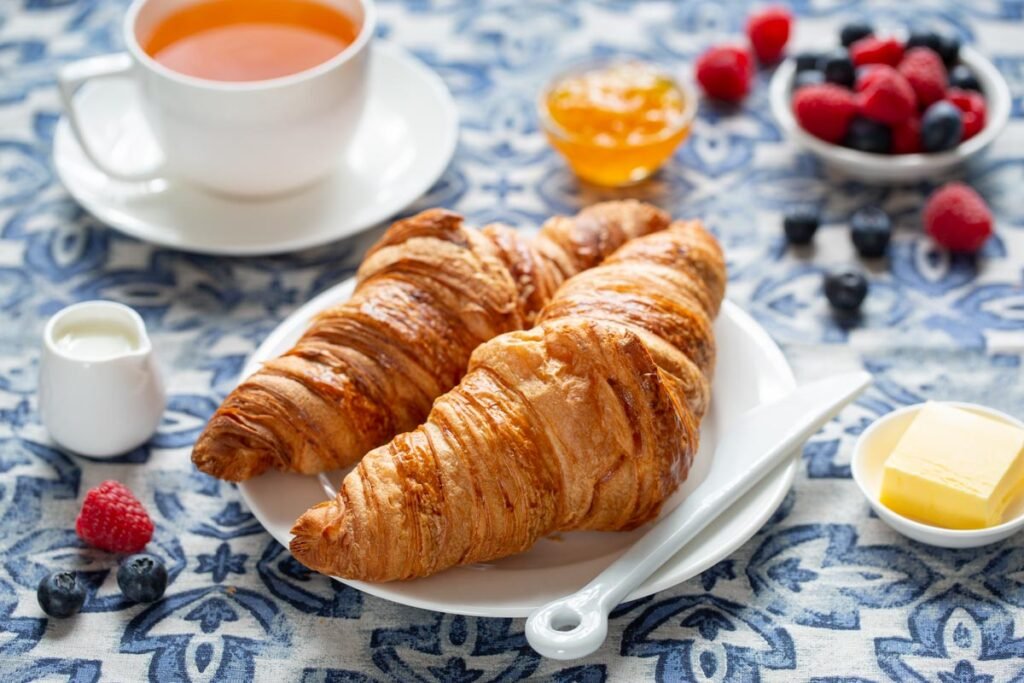
When it comes to photographing food, nothing beats using natural light. Out of the many creative food photography ideas, using natural light is arguably the most effective weapon in representing the colors and textures of your foods.
Advantages of Natural Light:
● Soft Shadows: When you shoot at reduced ambient light, soft images of the subject may be captured, which adds a layer or dimension to the food photography.
● Natural Exposure: All the colors of the food are enhanced naturally without being overexposed or bleached, thus making the dishes look appealing and fresh.
Pro Tip: While it is too tempting to place the food directly onto the sunlight for the utmost effect, it is advisable to do the opposite since such extreme angles produce unflattering shadows. It is therefore recommended that the arrangement be done close to a big window and a light diffuser be utilized, for example, by using a fine white curtain, to ensure even distribution of light.
2. Mastering Angles: Food Photography Ideas with Unique Perspectives

Preservation of angles is of utmost importance; a right angle can seemingly elevate a simple cuisine into an appealing work of art. However, the secret is in the knowledge of which angles are appropriate for what kinds of foods.
● Overhead Shots: They build in the best flat foods such as pizza, salad, or spreads. This angle is strategic since all poles and elements of the dish are captured in a single frame.
● Side Angles: Ideal working angles for complex patterns, such as in the case of burgers, sandwiches, and cakes. A side angle helps in expounding on the depth and layers of the dish, making it feel more alive.
● 45 Degree Angles: This is in between a full overhead and a side shot, one best suited for the food with height and detail.
Pro Tip: Try out different angles and pick the one that sells the image of the food best. The multiple views will be a great addition to your portfolio.
3. Food Photography Background Ideas: Crafting the Perfect Setting

One of the most important food photography ideas revolves around selecting the right background. The background should complement the food, not overpower it. With well-thought-out food photography background ideas, you can highlight the dish and enhance the overall presentation.
Here are some tried-and-tested backgrounds:
● Rustic Wooden Boards: These are excellent for giving a natural, homey feel to comfort foods like pies or soups.
● White Ceramic Surfaces: Simple and minimalist, white backgrounds help highlight colorful and vibrant dishes like salads, curries, or fruit bowls.
● Marble Countertops: Ideal for a luxurious look, especially for pastries, coffee drinks, or fine dining dishes.
Remember, the goal is to keep the focus on the food. The background should only enhance the visual story without stealing the spotlight.
4. The Power of Props in Food Photography
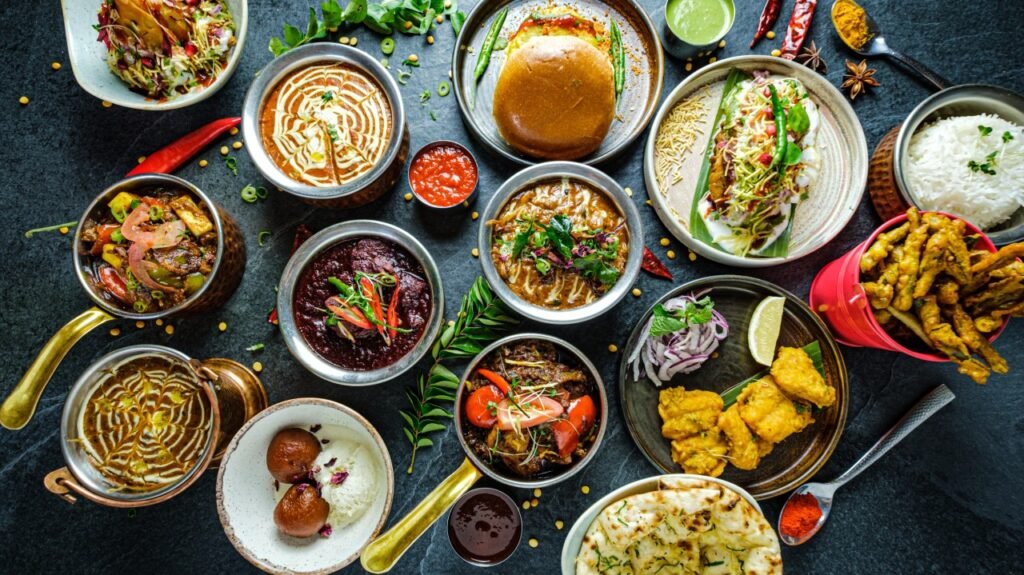
While props can certainly enhance the background, it is essential to use them appropriately without causing an overload towards the main focus, which is food.
● Cutlery: Uncommon kitchen items such as muffin tins, ornate forks, or elegant chopsticks help showcase the personality of the cuisine.
● Textiles: A squirrel napkin, placemat, or textured tablecloth may contribute some contrast and warmth.
● Seasonal Decor: Consider incorporating items that harmonize with the season, such as varieties of gourds for autumn or blossoms during spring.
The most important thing is that the props complement the theme and do not take attention away from the dish. Remember that restraint is elegance, especially when it comes to food photography props.
5. Christmas Food Photography Ideas: Making Magic With Festivities
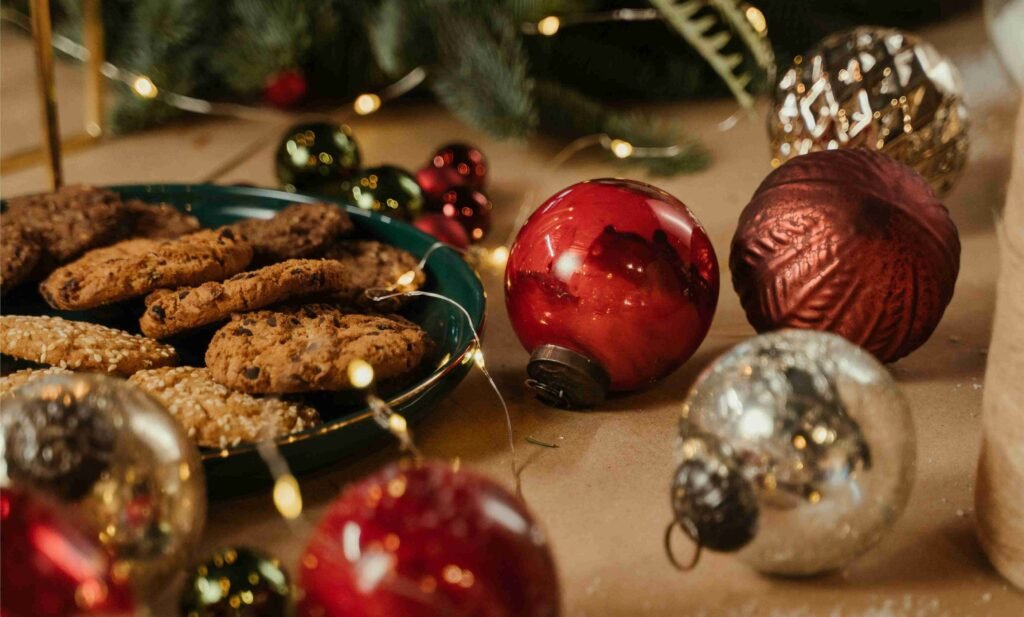
Christmas is a season worth waiting for, and it is also the best time for some Christmas food photography ideas. The only problem lies in the ability of the images to express the warmth, happiness, and nostalgia of the season.
This is how to appeal to the festive mood, in relation to food photography, of course:
● Digital Imaging: The coloration of digital images is very significant in capturing the attention and mood of the viewer so that he or she will always take it positively.
● Holiday Props: Christmas is rich in decorations, and those who want to take photos should consider including some in the mood.
● Seasonal Foods: All countries celebrated Christmas; each culture had its own traditions, with specific foods such as roast turkey, Christmas pudding, or mulled wine.
Lighting is also key; warm lighting should be used to create an inviting, intimate ambience. More string lights or soft candlelight in the background adds that depth to the shots. In this case, the emotions of the holiday season should be promoted to the target audience, as if inviting them to the merry-making.
6. Balance and Imbalance in Food Photography
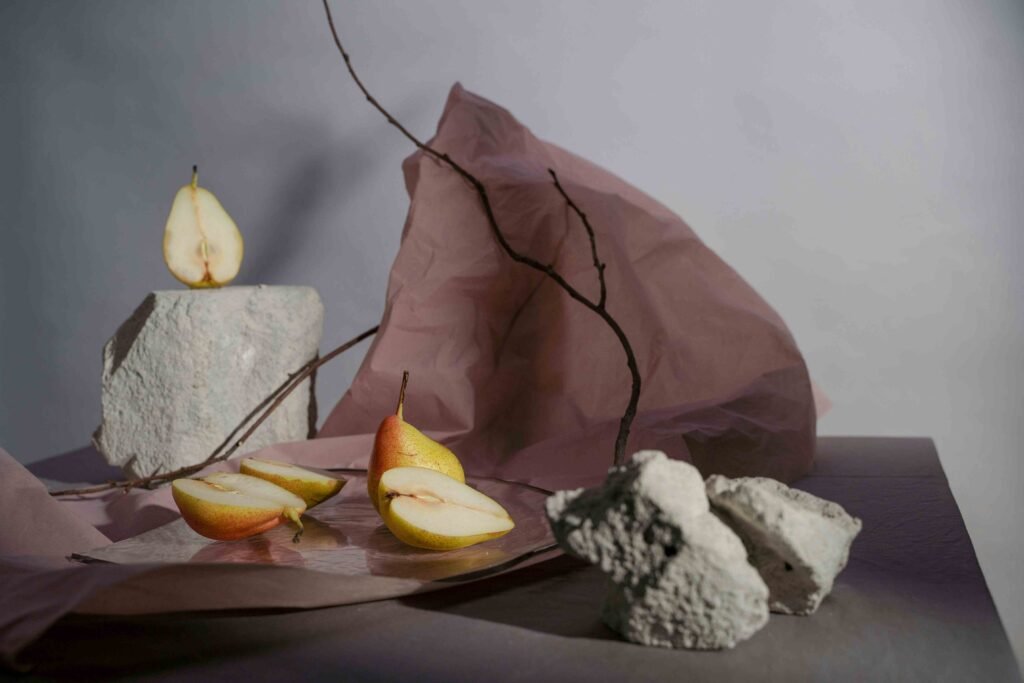
Every stunning picture has composition as one of its key elements. Knowing how to fix things in the frame can be very helpful.
● Balanced Composition: It offers balance, orderliness, and calmness and is best for presenting something with clear design boundaries, like a wooden box filled with sushi or a decorative plate of desserts.
● Unbalanced Composition: This is purely creative. In this case, asymmetry brings a feeling of action and catches the eye, making it ideal for more relaxed and informal images.
7. Motion in Food Photography: Giving Dynamics to Still Images

Even though food photography is mostly frozen in time, the inclusion of motion factors can liven up the images. Below are some of those suggestions:
● Pouring sauces: Get capturing images in action whereby syrup or gravy is being poured unto the plate or the food item.
● Sprinkling garnishes: Focus on the activity of adding edible elements such as herbs, spices, or powdered sugar.
● Steam rising: For instance, in the case of hot foods, steam pours out, which can look really warm and inviting as well as appetizing.
These small strokes not only beautify the pictures but also convey some message helping the audience visualize the process of dish creation or serving.
Color Theory in Food Photography: Creating Impactful Images
Knowing color theory can considerably enhance your skills in food photography. A balanced mix of colors can create moods and accentuate the characteristics of your cuisine, while bad color application can turn even the tastiest meals into flat images.
Antagonistic Colors
One of the most obvious techniques to enhance food in pictures is to use the antagonistic colors. These are colors located at a polar position in the color wheel such as red and green and blue and orange. For example, a delicious tomato salad will look much better with a sprinkle of bright green herbs.
Similar Hues
These schemes are effective in that they deliver an elegant and refined appearance in photos. A powerful impact on various shades of the same color when differentiated in a dish. For example, a composition containing asparagus, peas and mint green will present a soothing, consistent picture.
Neutral Tones as Contrasting Colors Purposes
Use neutral or, cold colors like white and light grey since these compliment the colors of the food. When there is a lavish salad or a bright stew, they take the center stage of the photograph if the background is plain. These colors also help in minimizing distractions and enable the focus to be on the colors of the food that are created naturally.Pro Tip: Experiment with different colors on your plates. Mixing bright colors with duller shades helps in creating an interesting picture, so do not hesitate doing this.
Using Negative Space in Food Photography: Let the Dish Breathe
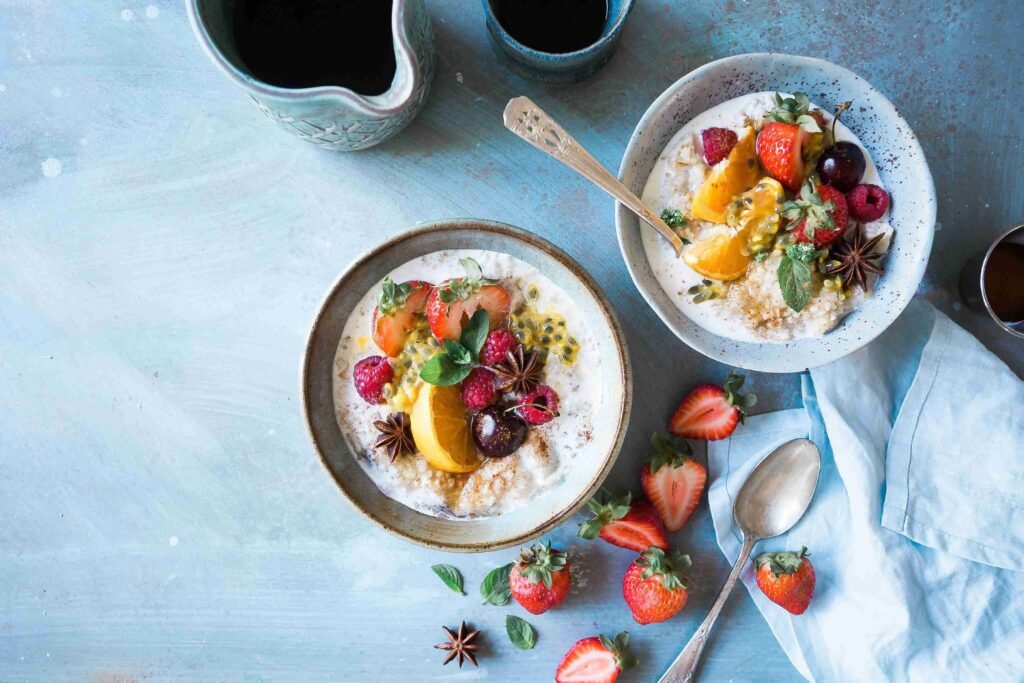
Another strategy that several high-achieving food photographers employ is the notion of negative space. Negative space designates the unoccupied sections surrounding one’s main object (the food), which can be just as important as, or even more than, the food itself.
What does ‘negative space’ mean?
Negative space works to create harmony within the image so that the audience can appreciate the main dish without having their senses bombarded. This kind of open area creates a sense of sophistication and minimalism, which is ideal for contemporary food photography.
How to Use Negative Space to Your Advantage
Do not fill every available space in the picture with food or props. Instead, leave some surfaces excessively blank. Such as the table where some part is intentionally left bare or a wall with no pictures on it. This approach is especially appropriate for amazing simple presentations or plated desserts, hors d’oeuvres.
At the same time, it is advisable to purposefully offset the placement of the dish, as opposed to keeping it in the center, in order to allow for a more interesting composition. One must be careful not to put everything in the middle of the composition since that would be too boring and practiced.
Storytelling Through Food Photography: Capturing More Than Just a Dish
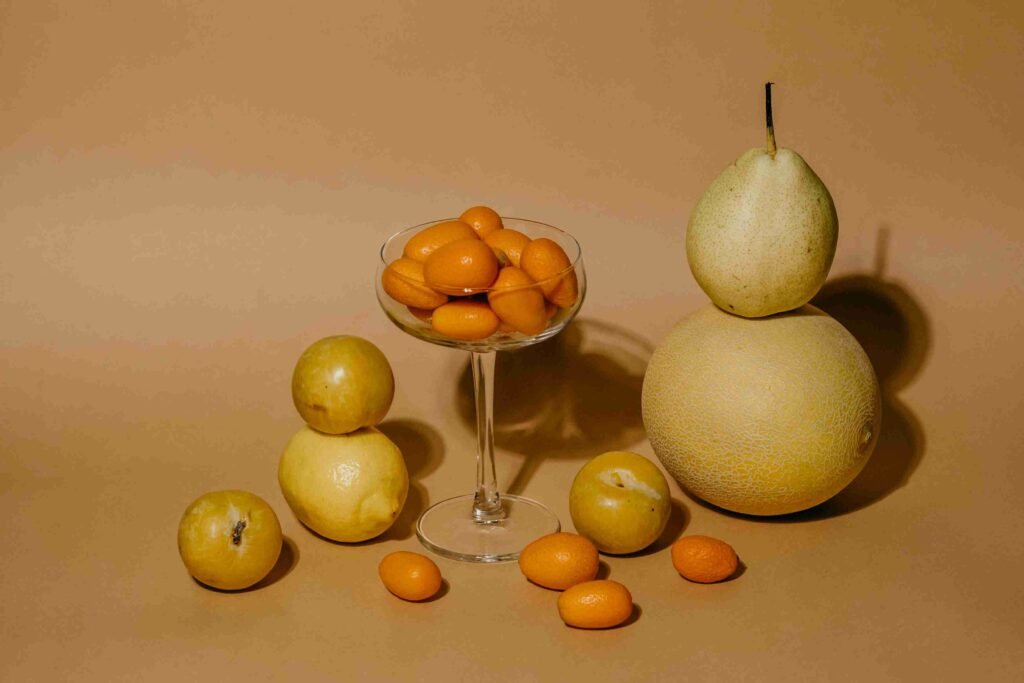
Photos of food are not only meant to be decorative but serve their own purpose in an even broader context, that being storytelling. The great joys of a family reunion or the leisurely extravagance of a good meal where one sits without hurry, for example, all have the potential to keep the audience in the picture.
Establishing the Context
In order to weave a tale in food photography, the other aspect to consider is the context. Are you capturing a friendly casual brunch or a romantic dinner for two? Achieve the mood through the use of the available props, lighting, and angles. For instance, a coffee cup with a book next to it depicts a different tale from an image of a colored dish with a white table cover.
Aim to Capture More Than Just the Final Photogenic Product
On other occasions, capturing the process of preparation or of serving out does well to enhance a photo. Examples include hands mixing the dough, a knife employing cutting techniques on fresh veggies, or a waiter serving wine. These types of shots are called action shots and help to liven up your images and engage the audience of the dish.
Expert Tip: It is advisable to include different aspects that demonstrate the culture or custom of the food in use. It can include lle, or explanations of such backgrounds that involve them in the storyline of the food.
How ZH Photography Studio Can Help You Look Good in Food Photography

Where and when you need professional and flawless food photography which conveys your brand identity, ZH Photography Studio is the company to work with. Their vast experience in coming up with creative food photography ideas and their quest for a personalized approach guarantees that every image falls in line with the target market.
What Makes ZH Photography Different?
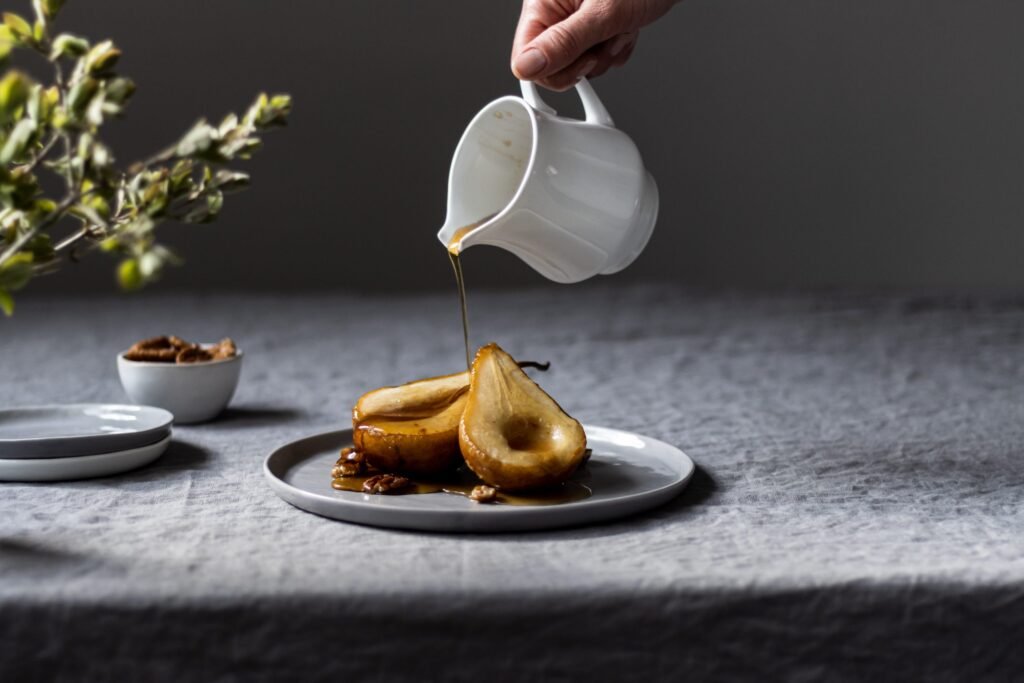
● Specialized Photoshoots: ZH Photography involves the client in the creative process to ensure the suitability of the photoshoot designed for the client’s brand.
● Global Approach: ZH Photography has engaged with clients from all corners of the earth giving them insights on how to make appealing food pictures for different countries and cultural practices.
● The High Level of Professionalism: In terms of lighting, angles etc, ZH Photography employs modern photography strategies to produce food images that convert effectively.
Conclusion: Bring Your Food to Life with ZH Photography Studio
To sum it up, food photography is an art that requires many skills such as focus, creativity, and technic. There are many possibilities of making food shots unique beginning from angles to scenery changes.
Regardless, if you wish to prepare a campaign for the holidays or simply looking for food photography background ideas, ZH Photography Studio is the right choice for food photography. Thanks to their experience and tailored offer, your food will turn into a work of art that will please your customers and help their business grow.
FAQs
Food photography relies heavily on the use of sunlight, especially during his convenient time known as the golden hours, which is early in the morning or late in the evening. This is because the light in these times is diffused, meaning there are no strong shadows, and it also helps enhance the appearance of food.
For an appetizing and fresh look, a light spray of oil or water mist on the fresh fruits and vegetables works well. Alternately, one can make several servings of the same food stylist, where the cuisine does not get old for many snapshots.
Any background, such as a textured wooden plank, plain white porcelain, or even a marble countertop, works well as they remain simple yet interesting enough to complement the food and not draw focus from it.
Definitely, artificial lighting can also be very effective, particularly in cases where natural light is either absent or inadequate. Lights such as Softbox or LED panels with diffusers can imitate natural light and allow more flexibility with the light conditions.
Always pick props that will beautify the food but not distract the viewer. Such include cutlery, serviettes, textured plates, and any other seasonal props that tell the story of the food. Less is more.
A professional photographer understands what makes each dish different and special. They know how to create dynamic compositions and work with light and detail to recreate your food to the highest standard possible for the benefit of your brand at the end of the day.









